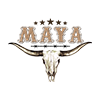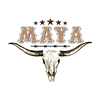Event Merch Made Easy with DTF Transfers: UV DTF Tactics for Fast‑Turnaround Custom Apparel (Blank T‑Shirts, Hoodies, Hats & Dropshipping)
If you run events, an apparel brand, an Etsy/Shopify shop, or offer merchandise for local communities, you know the pressure of tight deadlines, inconsistent suppliers, and customer expectations for vibrant, durable prints. DTF transfers — especially UV DTF — have emerged as an ideal solution for fast-turn, full-color custom apparel on blank t-shirts, hoodies, and hats. This long-form guide walks you through everything from beginner-friendly explanations to advanced tactics for experienced sellers, plus practical checklists, pricing strategies, and ways to integrate dropshipping fulfillment with MAYA TX.
Why DTF Transfers and What Makes UV DTF Different?
DTF (Direct-to-Film) transfers are prints created on a film, finished with adhesive powder, cured, and then heat-pressed onto garments. UV DTF uses UV-curable inks in the print stage, delivering faster curing, brighter whites, and better adhesion on challenging substrates like dark fabrics and caps. For event merch, where time and color impact sales, UV DTF reduces turnaround time and improves consistency.
Who Benefits Most?
- Event organizers needing same-week or same-day runs.
- Entrepreneurs launching seasonal drops or limited editions.
- Small apparel brands wanting full-color prints without large-screen setup costs.
- Etsy & Shopify sellers leveraging print-on-demand and dropshipping to scale quickly.
DTF vs. Screen Printing vs. DTG vs. Embroidery — Detailed Comparison
Choosing the right decoration method depends on run size, artwork complexity, fabric choice, and budget. Here’s a practical look:
- Screen Printing: Cost-effective at large volume, super durable, great for spot colors and Pantone matching. Downside: lengthy setup and not ideal for full-color photorealistic designs for one-offs.
- DTG (Direct-to-Garment): Soft-hand prints excellent on 100% cotton and ideal for high-detail, small runs. Limitations include slower speed, less consistency on poly blends and dark garments unless pre-treated.
- DTF (including UV DTF): Fast setup, excellent for small-to-medium runs, works across blends, and can recreate gradients and full-color designs reliably. UV DTF improves color pop and curing speed.
- Embroidery: Premium, durable, great for hats and polos. Embroidery is limited for photorealistic art and can be more expensive per unit for highly detailed designs.
Bottom line: Use screen printing for very large orders with limited colors, DTG for cotton-focused, soft-feel photography prints, and UV DTF for fast, color-rich, multi-fabric applications — especially when you need hats and dark garments to look great quickly.
Full Workflow for Fast-Turn UV DTF Event Merch
From design to delivery, here is a scalable workflow optimized for speed and quality:
-
Design & File Prep
- Create artwork at 300 DPI for raster or export vector art (AI, EPS, PDF) for logos.
- Use PNGs with transparent backgrounds for complex shapes; keep layers labeled.
- Include a white-underbase layer when printing to dark fabrics — name that channel clearly (e.g., 'WHITE_BASE').
- Work in sRGB or provide color references and request proofs for important brand colors.
-
Proofing & Mockups
- Share a realistic mockup and confirm placement, size, and color expectations with stakeholders before printing.
- Allow clients to approve a single physical sample for event-critical orders.
-
Printing & Curing
- Print to film using UV-curable inks with the correct white-underbase settings for opacity.
- Cure the ink under a UV lamp for rapid polymerization. This reduces handling time before pressing.
- Apply adhesive powder correctly — avoid over- or under-application to prevent residue or weak adhesion.
-
Transfer & Heat-Press
- Heat-press the transfer onto the garment with recommended temperature, time, and pressure (see the heat-press guideline section below). Always test one garment first.
- Allow proper cool-down or hot-peel vs. cold-peel as your film manufacturer recommends.
-
Quality Control & Wash Test
- Inspect prints for adhesion, color accuracy, and hand-feel.
- Run a wash/dry test on a sample: cold wash, tumble low or hang dry, and inspect after several cycles.
-
Fulfillment
- For local events use same-day pickup (available at MAYA TX in Austin); for online customers choose nationwide shipping or dropshipping fulfillment.
- Use fulfillment integrations to automate order flow and tracking notifications to customers.
Heat-Press Guidelines & Curing Notes
Every material and film type differs, so treat these as starting ranges and always test:
- Typical heat press temperature range: 140–165°C (285–330°F).
- Typical press time: 6–18 seconds depending on transfer size and fabric weight.
- Pressure: Medium to firm — enough to ensure contact without crushing fabric texture.
- UV curing: UV lamps cure ink rapidly; prints often require little to no additional drying time before pressing, speeding the process.
Note: Always follow the specific film and ink manufacturer’s recommendations. If you’re using MAYA TX as your print partner, we’ll handle settings and testing — reducing your learning curve.
File Specs & Color Management for Reliable Results
- Resolution: 300 DPI at final print size for raster artwork.
- Color space: sRGB is generally safe for DTF; ask for color proofs if exact matching is essential.
- White layer: Create a separate white mask or channel for dark garments. Ensure opacity is consistent where full coverage is needed.
- Vector art: Use vectors (AI, EPS, PDF) for logos to ensure crisp edges at any size.
Production Tactics for Sellers Who Need Speed
These operational tips help shrink lead times and cut costs without sacrificing quality:
- Nesting: Print multiple designs on one film sheet to reduce machine makes and save time.
- Pre-sorted garments: Keep separate carts for black, white, and blended garments to avoid re-press adjustments.
- Batch by size: Cutting down garment changes speeds up pressing when you do production runs at events.
- Use placeholders for inventory: Offer pre-orders with guaranteed event delivery and use a dropshipper to fulfill final shipments.
Pricing Strategy, Margins & Order-Sizing
Setting prices requires balancing perceived value, costs, and competition. Practical approaches:
- Calculate all costs: blank apparel cost + transfer cost (ink, film, powder, labor) + press time + packaging + shipping.
- Set baseline margins (typical retail margins for merch range from 50–300% depending on brand and exclusivity).
- Offer bundles and limited editions to raise average order value (e.g., tee + sticker + tote).
- Use tiered pricing for wholesale/event bulk orders (5–20 pcs, 21–100, 100+).
- Charge a rush fee for expedited same-day or overnight production to cover overtime and logistics.
For exact quotes and tiered pricing options, contact MAYA TX — we provide transparent pricing for same-day pickup, nationwide shipping, and dropshipping fulfillment.
Marketing, SEO & Pre-Event Sales Tactics
To sell more merch, prioritize discoverability and urgency:
- Optimize product pages and landing pages with keywords such as "DTF transfers," "UV DTF," "custom apparel," "blank t-shirts," "hoodies," "hats," "print-on-demand," and "dropshipping."
- Create event-specific landing pages and pre-order funnels to capture emails and payments before production.
- Use social proof: showcase customer photos, reviews, and wash-test evidence to increase trust.
- Run limited-time offers and countdowns for event pickup windows.
- Integrate your store with fulfillment partners for automated shipping and real-time inventory updates.
Helpful external resources for e-commerce growth: Printful, Shopify Blog, and Oberlo.
Trending Design Ideas & Side‑Hustle Opportunities for 2025
- Local-first designs: neighborhood maps, event-specific art, and micro-communities.
- Retro aesthetics: Y2K and 90s-inspired graphics with neon and grain effects.
- Sustainability stories: use and promote eco-friendly blanks and small-batch DTF runs for conscious consumers.
- Collaborations: limited-edition artist collabs sold at events or as pre-orders.
- Customizable templates: offer buyers the ability to add names/numbers for teams or groups (fast with DTF transfers).
Frequently Asked Questions (Expanded)
Is DTF durable after many washes?
Yes — properly cured DTF prints can withstand dozens of washes when cared for correctly. Durability depends on film, ink, curing and pressing parameters. Recommend customers wash inside-out in cold water and tumble low or air-dry.
Which fabrics work best?
DTF is very tolerant: cotton, cotton blends, and many poly blends perform well. UV DTF improves adhesion on tricky substrates like tech fabrics or dark blends. Hats with smooth front panels transfer best, and structured caps often pair well with a DTF patch plus embroidery for detail.
Can I integrate DTF dropshipping with my Shopify or Etsy store?
Yes. Use fulfillment partners that support API/order routing to automate print and ship workflows. MAYA TX supports dropshipping fulfillment so you can sell without holding inventory — we print and ship directly to customers.
Do I need to buy equipment to get started?
No. For most entrepreneurs and side-hustlers, partnering with a reliable print partner like MAYA TX is faster and more capital-efficient. If you plan to scale in-house, budget for a DTF printer, UV curing, powder station, and heat press plus training and test runs.
Environmental & Care Considerations
UV inks can be more environmentally friendly than some solvent-based systems because they cure with light rather than heat. Still, proper disposal of powder residues and waste film is important. Offer garment care instructions to customers to extend print life and reduce returns.
Case Study Snapshot: Fast-Turn Event Run (Hypothetical)
Scenario: A 300-person charity 5K requests 200 hoodies and 50 hats with a 7-day lead time. Using UV DTF, a print partner can:
- Print nested transfers and batch hoodies by color to press in a streamlined flow.
- Produce hats using DTF patches for complex color and pair with a small embroidered logo for premium feel.
- Fulfill via nationwide shipping and hold a local batch for same-day pickup in Austin for VIPs — minimizing risk and delivery variables.
The result: high-quality, on-time merch with cost savings over rush screen-printing, and a smoother fulfilment experience when dropshipping is enabled for remote participants.
Final Checklist Before You Launch Event Merch
- Confirm artwork sizes, color expectations, and white-underbase needs.
- Order and approve a physical sample before bulk production.
- Choose blanks and confirm size/color inventory (MAYA TX has a wide selection).
- Decide on fulfillment: same-day pickup (Austin), nationwide shipping, or dropshipping.
- Set pricing, rush fees, shipping windows, and marketing/SEO-ready product pages.
Conclusion: Scale Faster with UV DTF & Smart Fulfillment
UV DTF transfers combine color fidelity, substrate versatility, and rapid curing to make them a compelling choice for event merch, blank t-shirts, hoodies, and hats. Paired with dropshipping fulfillment and a reliable blank apparel supplier, you can deliver professional, on-brand merchandise on tight timelines — and scale without excess inventory.
Call to Action
Ready to simplify event merch production? Order DTF transfers, shop blanks, or set up dropshipping fulfillment with MAYA TX. Explore our services: DTF Transfers, UV DTF, and our Blank Apparel collection. We offer same-day pickup in Austin, nationwide shipping, and full dropshipping fulfillment so we can print and ship directly to your customers. Contact MAYA TX for quotes, file checks, and production timelines — let’s get your event merch ready, fast.


















